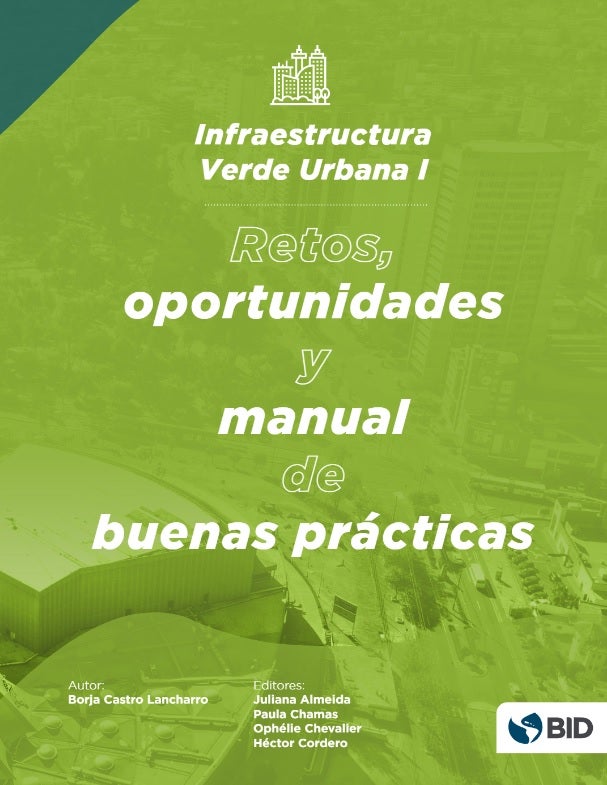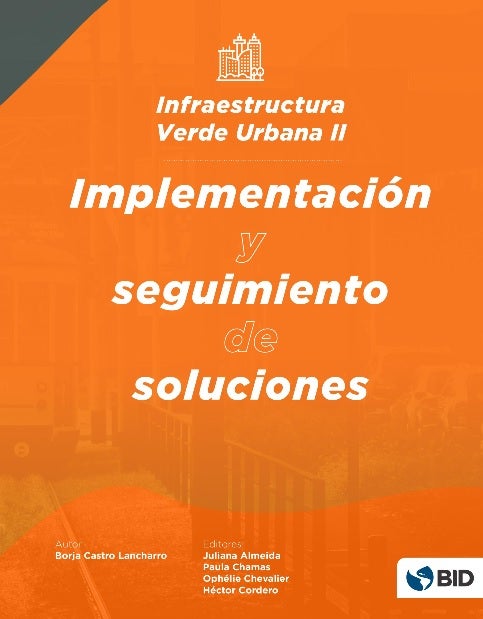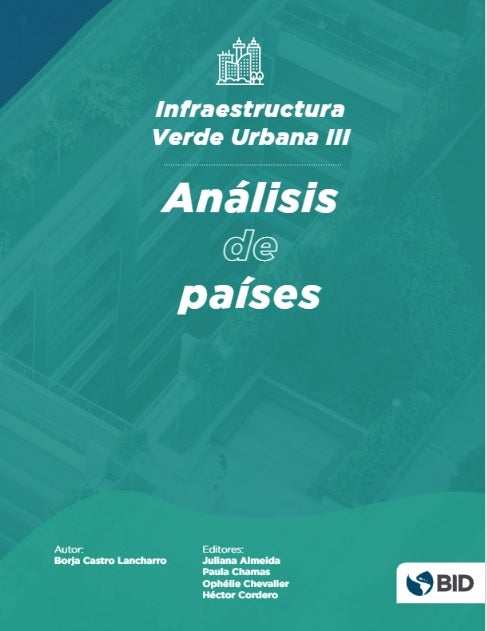Este artículo está también disponible en / This post is also available in: Spanish
Cities and Resilience to Climate Change
Did you know that, even though cities represent less than 3% of the habitable surface of the planet, they account for 75% of global CO2 emissions? Although this may seem like a problem, it is actually a great opportunity, since cities, in addition to being the economic and social engine of our region, are called to lead the fight against climate change.
At the Inter-American Development Bank (IDB) we are aware of the importance of cities in achieving the Paris Agreements and COP26. For this reason, and in line with our 2025 Vision, at the Department of Housing and Urban Development we work to identify projects and financing that support adaptation and mitigation solutions to the growing effects of the climate crisis in Latin America and the Caribbean (LAC). One of the ways cities can achieve this goal is through urban green infrastructure (UGI) and nature-based solutions.
Nature-Based Solutions and Urban Green Infrastructure: how can they benefit cities in the region?
Nature-based solutions (NBS) are actions to protect, sustainably manage, and restore natural or modified ecosystems that address societal challenges effectively and adaptively, simultaneously providing benefits for human well-being and biodiversity.
UGI is a tool that provides ecological, economic and social benefits through this type of solutions. In other words, UGI provides a network of urban interconnection with nature, semi-natural areas and green spaces, which provide ecosystem services that support human well-being and quality of life.

The incorporation of the UGI to cities and urban centers can bring numerous benefits that respond to the climatic threats they face, which include increases in temperature and heat islands, droughts, floods, erosive processes, and loss of biodiversity, among others. For this, the IVU can be conceived as corrective actions on pre-existing situations or be included in urban planning and design of operations.
What is the potential of Urban Green Infrastructure?
The incorporation of UGI in cities and urban centers can provide numerous benefits, such as the sustainable management of stormwater, reducing the impact of heat waves and regulating temperature, improving air quality and water quality, mitigate the effects of drought, dampen noise, increase biodiversity, reduce erosion processes, as well as provide cultural services.
According to an IDB study, green infrastructure can be managed more adaptively than investments in gray infrastructure, which tend to be more expensive to modify after initial construction. Adopting green infrastructure can help close the infrastructure investment gap by improving the services that gray infrastructure provides. In many cases, given the complexity of the urban environment, hybrid solutions allow maximizing the efficiency of the existing gray infrastructure by incorporating UGI.

Leading cities in Urban Green Infrastructure solutions
Many cities in the region have been implementing UGI solutions for years, which are success stories of reference. Currently, we can identify from small-scale projects such as the flood gardens in Sao Paulo that collect rainwater and surface runoff and purify it, to pilot green roofs in public schools in Buenos Aires that have contributed to improving regulation thermal, noise reduction and the provision of educational spaces. At an international level, we can find examples where the UGI has been integrated on a large scale, such as the so-called sponge cities in China, designed so that the entire surface of the cities has the capacity to filter and manage rainwater, preventing flooding, and such as the planning of green spaces and green corridors in London to improve biodiversity, increase the well-being of citizens and enhance climate resilience.
Regarding the comparison with the gray infrastructure, one of the most outstanding cases is found in the Metropolitan Area of Asunción, where it was estimated that the cost of a traditional drainage and sewage system that avoids all the material and human damage of the floods was of US$1,986 million. Bearing in mind that one of the strongest storms in recent decades left in the city of Asunción in 2015 the equivalent of 9,360 m3 of water in 2 hours, and considering that a rain garden project with a capacity of 45,000m3 of water has At an approximate cost of US$3.6 million, the cost of UGI is very low compared to gray infrastructure, as long as the city has the infrastructure to channel the water to the rain gardens.

Main challenges for Urban Green Infrastructure
Cities, infrastructure service providers and civil society lack the capacity and resources to integrate NBS into their processes and projects. Therefore, these projects are unable to access private financing and development investments, according to a recent IDB study on the current state of NBSs in LAC.
The mainstreaming of urban green infrastructure in planning is a challenge. Update and formulate new regulations regarding the management of rainwater, the change of land use in flood zones, expansion of the area of green spaces per inhabitant, introduction of tree species to reduce the effects of the heat wave, These are some of the modifications to the current regulation that are on the agenda in the region.
IDB Manuals on Urban Green Infrastructure
To respond to these challenges, the IDB has recently published three manuals that can provide essential support to governments and urban service providers in making decisions about the most appropriate type of green infrastructure solution, evaluating the cost-benefit and act in accordance with the current regulatory framework. Likewise, these manuals are a first step to start mainstreaming the UGI in the planning codes, budgets and territorial ordering documents.



.
The first of the three manuals, provides a list of international case study examples of urban green infrastructure solutions. These examples expose the problem and how a particular UGI solution was chosen to solve the climate threat.
The second manual compiles a series of technical sheets with some green infrastructure solutions, including information on the ecosystem services it provides and the economic benefits generated by its adoption. Solutions include green spaces, corridors, urban parks, tree canopies, green linear transportation infrastructure, rain gardens, and riverside parks, among others.
In the third manual, a group of countries is analyzed when implementing nature-based solutions.
Urban Green Infrastructure in El Salvador
In the next blog of this series, we will address how the Metropolitan Area of San Salvador made the decision a few months ago to work hand in hand with the IDB to review its urban initiatives, to expand and systematize the inclusion of the IVU. Do not miss it!
If you enjoyed this blog, sign up here to receive our monthly newsletter with all the blogs, news, and events from the IDB’s Housing and Urban Development Division.


Brissette Jaeli De Paz Peña, student of the Preparatory School Number 7 of the Autonomous University of the State of Hidalgo, part of one of my complementary activities of my English subject is to make a comment on a specific topic of my interest, so I chose this one in which it is spoken of cities with good infrastructure, but beyond that I wanted to focus on collaborating with an environment that benefits the planet, taking into account these relevant points for our own good as the population of this world, something of the utmost importance for the conservation of our own home.